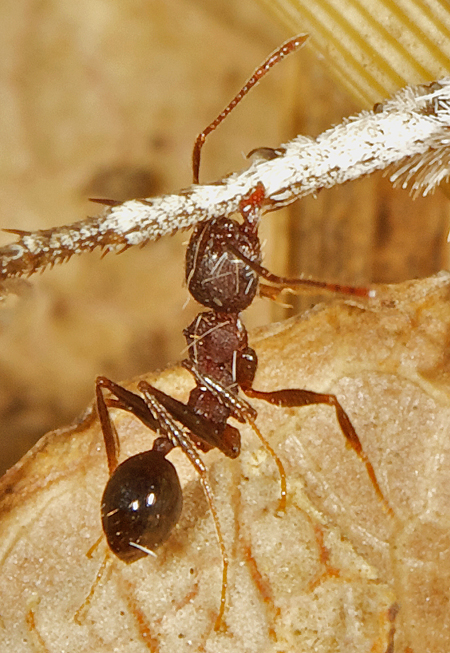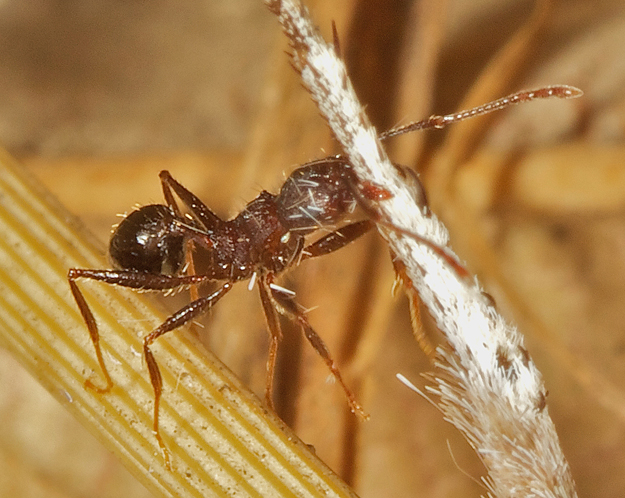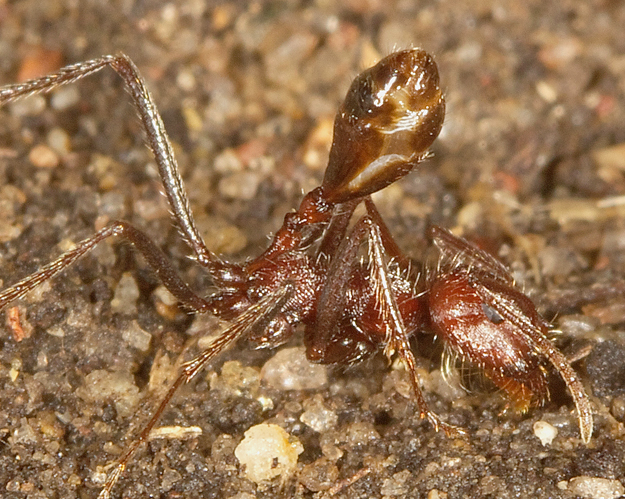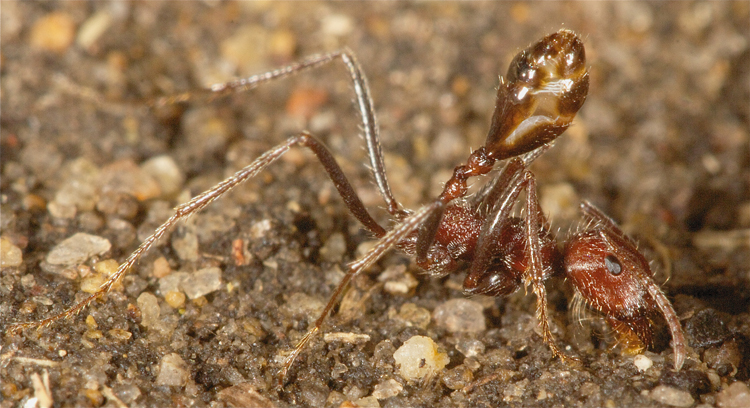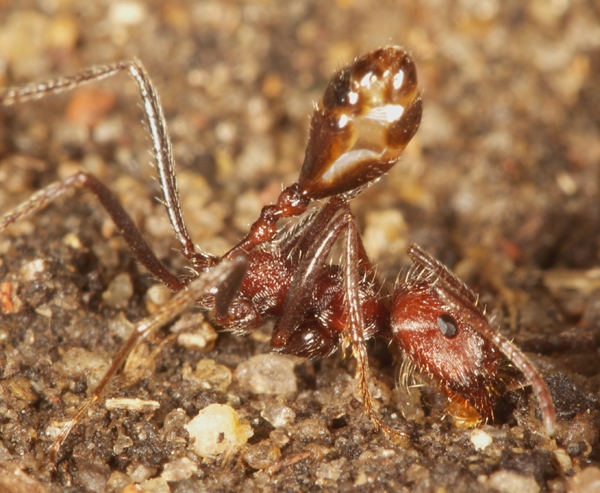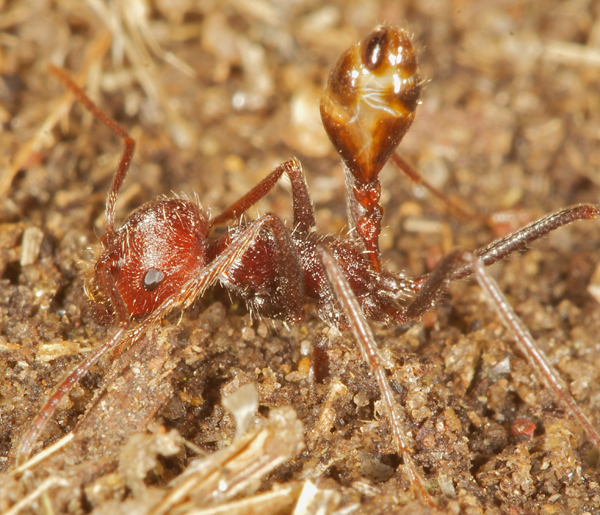Page 281 of 295
Re: Insect or Invertebrates Identification
Posted: Tue Feb 16, 2021 9:08 am
by Klipspringer
Have added a bit to the leaf beetle entry

and named it "Hairy" due to the tribe diagnosis being pubescent
ExFmem, please do the KTP
Pheidole, you are very good at it

The Kruger Pheidole second photo does not help much either.

Re: Insect or Invertebrates Identification
Posted: Tue Feb 16, 2021 10:25 am
by Klipspringer
We make this a minor of P. crassinoda - it's the only one with minors having red dark legs and punctures on all middle segments and not very hairy all over
http://antsofthecape.blogspot.com/p/phe.html
https://www.antwiki.org/wiki/Pheidole_crassinoda
https://www.inaturalist.org/taxa/632219 ... wse_photos
Please can you do the entry?


Did it scavange the spider leg?
Re: Insect or Invertebrates Identification
Posted: Tue Feb 16, 2021 3:28 pm
by Klipspringer
ExFmem wrote: ↑Mon Feb 15, 2021 9:46 pm
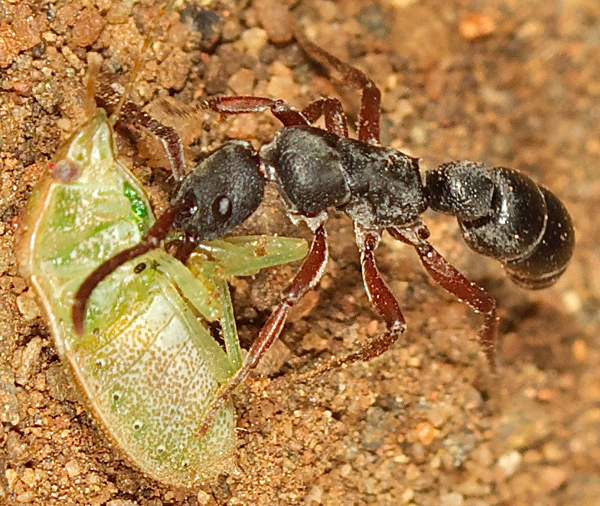
I also found some spiders while searching for the ants, so will post them later after I get the beetle entry re-done. Do you want to do the
P. tenuinodis ant, or shall I? You have so much better knowledge than I do, but are WAY busier with all that's on your plate. I can certainly cut and paste all your great references

She is here
viewtopic.php?p=505093#p505093


Re: Insect or Invertebrates Identification
Posted: Tue Feb 16, 2021 3:43 pm
by Klipspringer
ExFmem wrote: ↑Tue Feb 16, 2021 1:06 am
I deleted the erroneous Darkling Beetle entry (it now says "deleted" )

and entered the new one. Really didn't have too much info, so feel free to add to it.

****************************
Here are some pics I found from Kruger 2017 of the Anteater spider
Oecobius navus showing more of its biology :
Biology
Makes a small web, which has a diameter of only about 3 cm, and is often made against an edge of something, e.g. from the floor against a baseboard, but it can also be found on walls over small recesses. It lives this tent-like web but does not use the web for prey capture. Instead, it only uses bands of silk to restrain prey.
Movement is rather fast and in a very convoluted pathway. Often feed on ants. If it runs into an ant, the spider switches from convoluted running to running tight circles around their prey, tying it down with silk as it encircles it.
Oecobius navus is considered a facultative myrmecophage (ant-eater).
(Don’t need all of them, but can add as you see fit.)

(Under web)

(With ant prey)
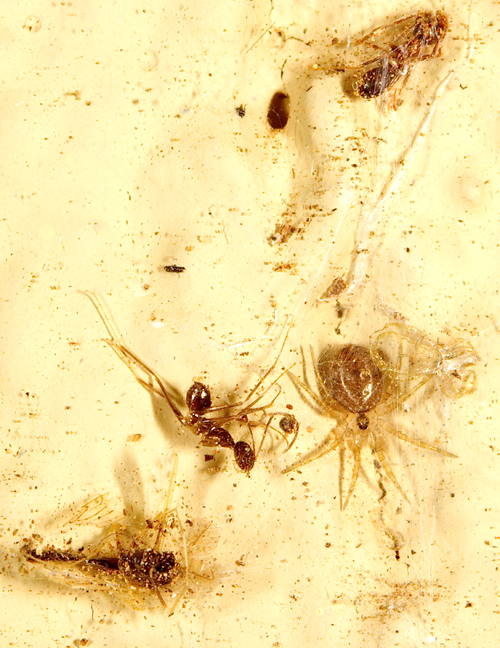
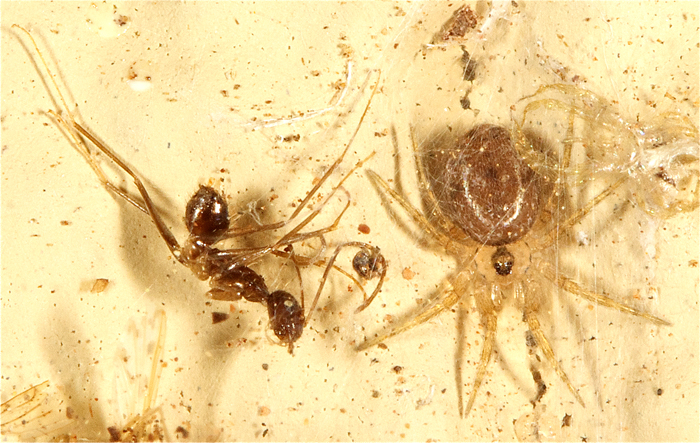
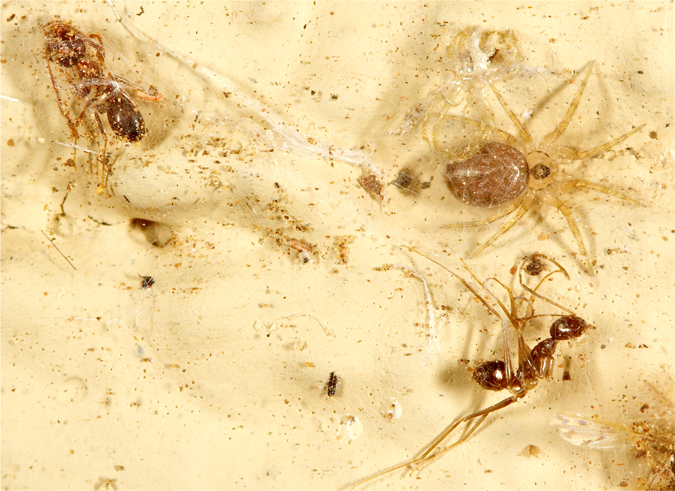
Added the photos, very cool observation


Re: Insect or Invertebrates Identification
Posted: Tue Feb 16, 2021 6:13 pm
by Klipspringer
Re: Insect or Invertebrates Identification
Posted: Tue Feb 16, 2021 11:35 pm
by ExFmem
P. tenuinodis done. (I suppose the fruit fly that the ant has was just in the wrong place at the wrong time, since they also
“feed upon the surfaces of fruits, leaves, plant secretions and honeydew produced by aphids”, as the ants do.)

Re: Insect or Invertebrates Identification
Posted: Thu Feb 18, 2021 6:14 pm
by ExFmem
P. crassinoda done, but not too much info.
You asked if it scavenged the leg, but it only caught my eye as it was struggling to hoist it over the twig, so I don't know.
Also, I found an article about group co-operative behavior of
P. crassinoda that I would like to have included, but I don't have the credentials to access the entire paper.
 “Workers of Pheidole crassinoda Em. regularly work in groups to transport prey…A comparison of the behavior of ants moving prey singly and in groups led to the conclusion that, although the behavior of ants in a group was in many ways the same as that of single ants, group transport in this species showed co-operative features.”
https://brill.com/view/journals/beh/16/ ... anguage=en
“Workers of Pheidole crassinoda Em. regularly work in groups to transport prey…A comparison of the behavior of ants moving prey singly and in groups led to the conclusion that, although the behavior of ants in a group was in many ways the same as that of single ants, group transport in this species showed co-operative features.”
https://brill.com/view/journals/beh/16/ ... anguage=en
Re: Insect or Invertebrates Identification
Posted: Thu Feb 18, 2021 6:18 pm
by Klipspringer
ExFmem wrote: ↑Thu Feb 18, 2021 6:14 pm
P. crassinoda done, but not too much info.
You asked if it scavenged the leg, but it only caught my eye as it was struggling to hoist it over the twig, so I don't know.
Also, I found an article about group co-operative behavior of
P. crassinoda that I would like to have included, but I don't have the credentials to access the entire paper.
 “Workers of Pheidole crassinoda Em. regularly work in groups to transport prey…A comparison of the behavior of ants moving prey singly and in groups led to the conclusion that, although the behavior of ants in a group was in many ways the same as that of single ants, group transport in this species showed co-operative features.”
https://brill.com/view/journals/beh/16/ ... anguage=en
“Workers of Pheidole crassinoda Em. regularly work in groups to transport prey…A comparison of the behavior of ants moving prey singly and in groups led to the conclusion that, although the behavior of ants in a group was in many ways the same as that of single ants, group transport in this species showed co-operative features.”
https://brill.com/view/journals/beh/16/ ... anguage=en
https://www.jstor.org/stable/4532957?se ... b_contents
another paper
https://www.jstor.org/stable/2096812?se ... b_contents
Re: Insect or Invertebrates Identification
Posted: Thu Feb 18, 2021 6:37 pm
by Klipspringer
Re: Insect or Invertebrates Identification
Posted: Fri Feb 19, 2021 7:43 pm
by ExFmem

I signed up on JSTOR and read both articles - lots of interesting info. in both. I just posted the summarization of the study in my entry, but please add as you see necessary.
Now, on to
Ocymyrmex fortior. We're making progress!
 and named it "Hairy" due to the tribe diagnosis being pubescent
and named it "Hairy" due to the tribe diagnosis being pubescent

